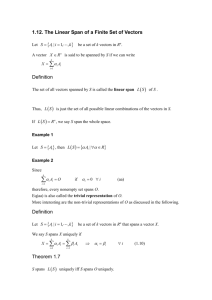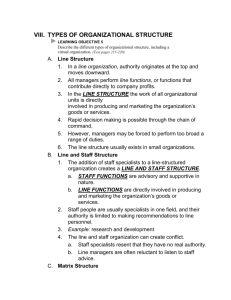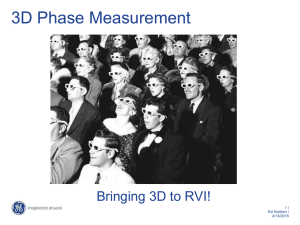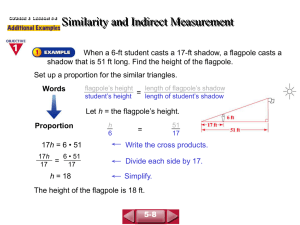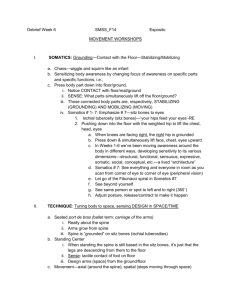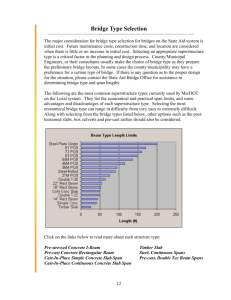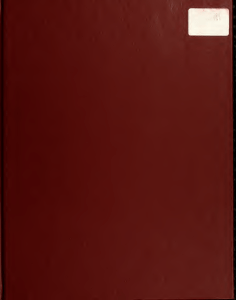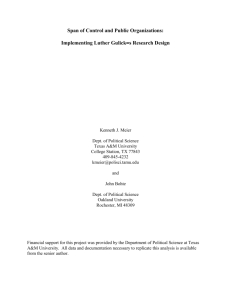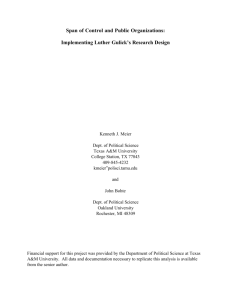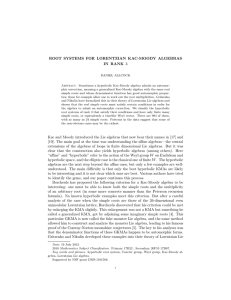How Big is Your Tree?
advertisement
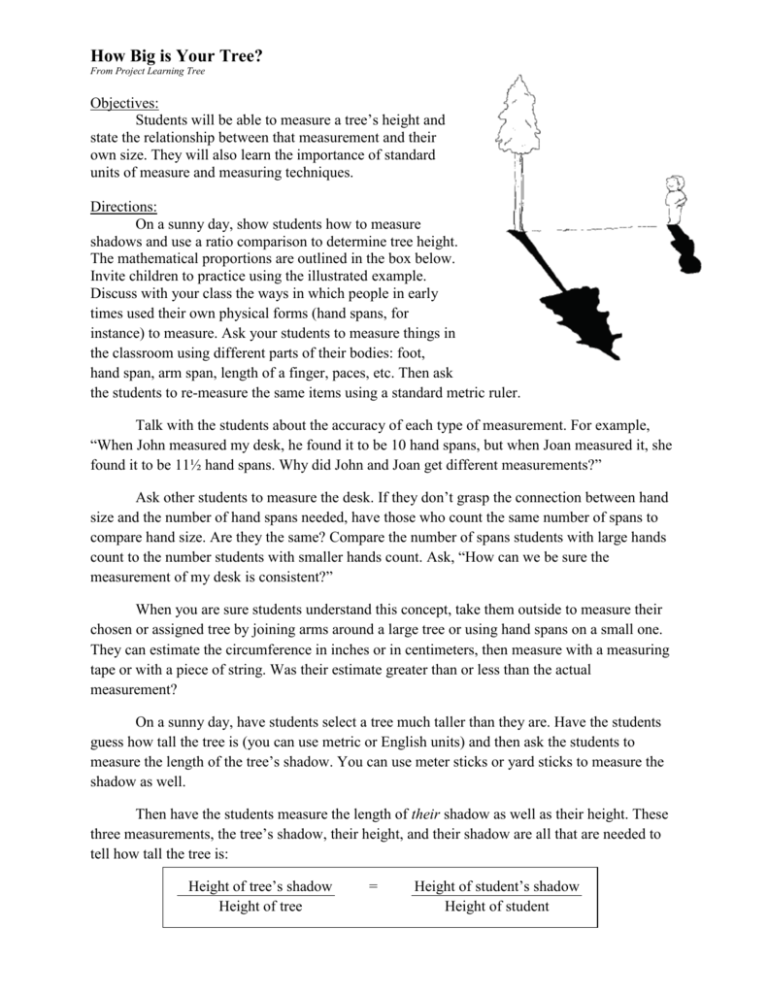
How Big is Your Tree? From Project Learning Tree Objectives: Students will be able to measure a tree’s height and state the relationship between that measurement and their own size. They will also learn the importance of standard units of measure and measuring techniques. Directions: On a sunny day, show students how to measure shadows and use a ratio comparison to determine tree height. The mathematical proportions are outlined in the box below. Invite children to practice using the illustrated example. Discuss with your class the ways in which people in early times used their own physical forms (hand spans, for instance) to measure. Ask your students to measure things in the classroom using different parts of their bodies: foot, hand span, arm span, length of a finger, paces, etc. Then ask the students to re-measure the same items using a standard metric ruler. Talk with the students about the accuracy of each type of measurement. For example, “When John measured my desk, he found it to be 10 hand spans, but when Joan measured it, she found it to be 11½ hand spans. Why did John and Joan get different measurements?” Ask other students to measure the desk. If they don’t grasp the connection between hand size and the number of hand spans needed, have those who count the same number of spans to compare hand size. Are they the same? Compare the number of spans students with large hands count to the number students with smaller hands count. Ask, “How can we be sure the measurement of my desk is consistent?” When you are sure students understand this concept, take them outside to measure their chosen or assigned tree by joining arms around a large tree or using hand spans on a small one. They can estimate the circumference in inches or in centimeters, then measure with a measuring tape or with a piece of string. Was their estimate greater than or less than the actual measurement? On a sunny day, have students select a tree much taller than they are. Have the students guess how tall the tree is (you can use metric or English units) and then ask the students to measure the length of the tree’s shadow. You can use meter sticks or yard sticks to measure the shadow as well. Then have the students measure the length of their shadow as well as their height. These three measurements, the tree’s shadow, their height, and their shadow are all that are needed to tell how tall the tree is: Height of tree’s shadow Height of tree = Height of student’s shadow Height of student


